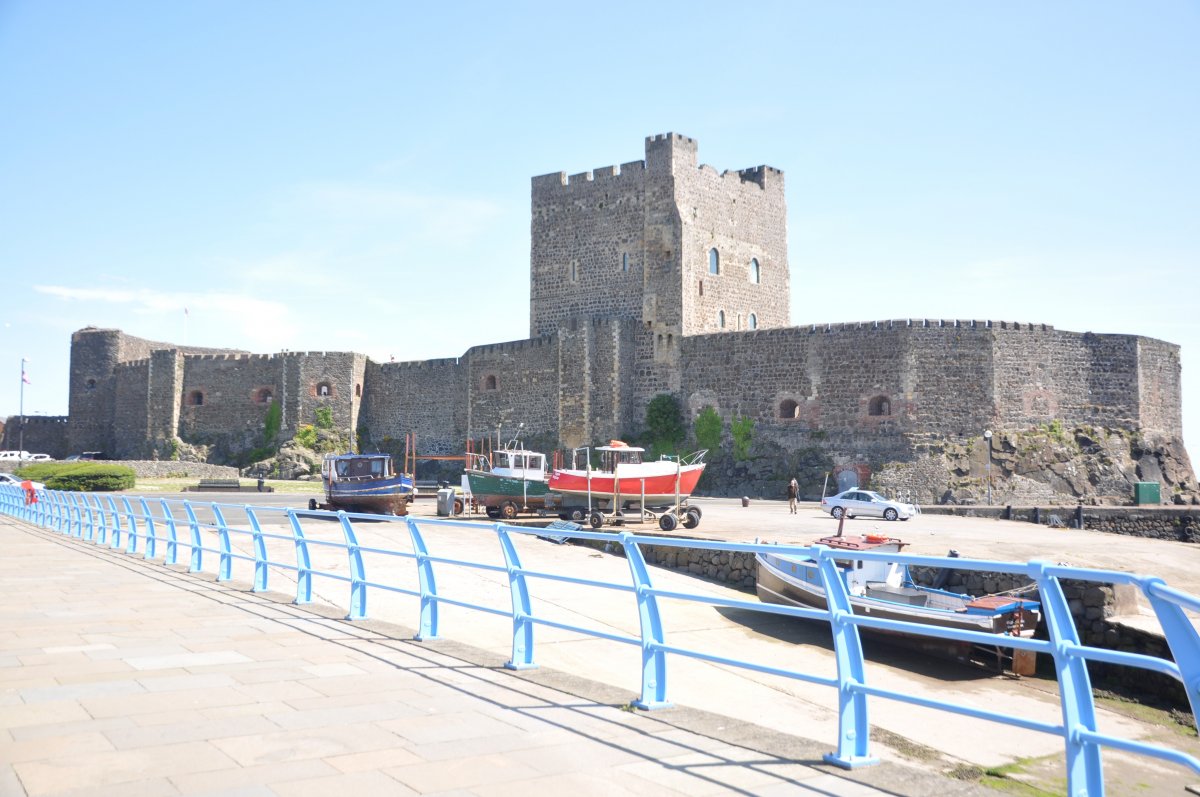

The town was largely destroyed by the Scots in 1402. The forces of Edward de Bruce captured the town in 1315 and the castle in 1316 before his death in battle in 1318. De Lacy eventually regained his title of Earl of Ulster in 1227, however the castle and its walled town were captured several more times following his death (in 1242). De Lacy was relieved of his command of the town in 1210, when King John himself arrived and placed the castle under royal authority. It was at this time that he established the nearby St Nicholas' Church. De Lacy oversaw the final construction of the castle, which included the gatehouse, drum towers and outer ward. Sometime between 12, De Courcy was expelled from Ulster by Hugh de Lacy, as authorised by King John. The castle, which is the most prominent landmark of Carrickfergus, is widely known as one of the best-preserved Norman castles in Ireland. Ĭarrickfergus became an inhabited town shortly after 1170, when Anglo-Norman knight John de Courcy invaded Ulster, established his headquarters in the area and built Carrickfergus Castle on the "rock of Fergus" in 1177. Archaeological excavations close to the walls' foundations have yielded many artefacts that have helped historians piece together a picture of the lives of the 12th and 13th century inhabitants. Segments of the town wall are still visible in various parts of the town and in various states of preservation. The historical walled town originally occupied an area of around 97,000 square metres, which now comprises the town centre, bordered by Albert Road to the west, the Marine Highway to the south, Shaftesbury Park to the north and Joymount Presbyterian Church grounds to the east. Carrickfergus and the surrounding area was, for a time, treated as a separate county. Belfast Lough itself was known as 'Carrickfergus Bay' well into the 17th century. Īs an urban settlement, Carrickfergus far pre-dates the capital city Belfast and was for a lengthy period both larger and more prominent than the nearby city. According to one tale, his ship ran aground on a rock by the shore, which became known as "Carraig Fhearghais" – the rock of Fergus. The town is said to take its name from Fergus Mór (Fergus the Great), the legendary king of Dál Riata. History Ĭastle and dock of Carrickfergus in 1830 Middle Ages

It is also a townland of 65 acres, a civil parish and a barony. Carrickfergus was the administrative centre for Carrickfergus Borough Council, before this was amalgamated into the Mid and East Antrim District Council in 2015, and forms part of the Belfast Metropolitan Area. After the earldom's collapse, it remained the only English outpost in Ulster for the next four centuries. Carrickfergus Castle, built in the late 12th century at the behest of Anglo-Norman knight John de Courcy, was the capital of the Earldom of Ulster. It is County Antrim's oldest town and one of the oldest towns in Ireland as a whole. The town had a population of 28,135 at the 2021 Census (and 27,998 at the 2011 Census). It sits on the north shore of Belfast Lough, 11 miles (18 km) from Belfast.


 0 kommentar(er)
0 kommentar(er)
